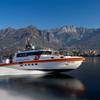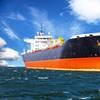Partnership Envisions Ammonia-Fueled Feeder Ship
ABS joined forces with MAN Energy Solutions (MAN) and the Shanghai Merchant Ship Design & Research Institute (SDARI) to develop an ammonia-fueled feeder vessel.
The joint development project aims to produce designs for an ammonia-fueled Chittagongmax container carrier of 2700 TEU capacity.
“Ammonia is an energy source with significant potential to help the industry meet IMO 2030 and 2050 emission targets but will require stringent new safety standards to be developed in order to support its adoption,” said Dr. Xiaozhi (Christina) Wang, ABS Vice President, Global Marine.
“This innovative project is typical of how ABS is working with leading partners across the world to support the development of next generation fuel solutions for shipping,” she added.
SDARI will develop the ship design and engineering, which will utilize MAN’s dual fuel technology and ABS will assess safety-related issues and contribute to the development of rules and standards in relation to ammonia as a fuel.
Conceptual design development is the initial phase of the JDP, with the second phase moving to engagement with owners to develop designs tailored to their specific operational requirements.
“Building upon SDARI’s experience in feeder container vessels, we are actively seeking to develop next generation designs that incorporate strategies to meet IMO 2030 and 2050 targets,” said Zhiyong Zhou, SDARI Vice President.
Bjarne Foldager, Senior Vice President, Head of Two-Stroke Business at MAN Energy Solutions, said: “The development of ships with low greenhouse-gas emissions fits well with the strategy of MAN Energy Solutions’ two-stroke portfolio, which has offered engines that can burn low- or zero-carbon fuels for many years. As such, low-speed marine engines are already the most efficient propulsion system for trans-oceanic shipping, making them the de-facto, standard powertrain for commercial vessels. Ammonia can be seen as a potential future energy-carrier of renewable primary-energy sources such as wind, hydro or solar.”
Ammonia, when generated by renewable energy sources, has no carbon footprint and emits almost no CO2, SOx or particulate matter when burned in engines.












